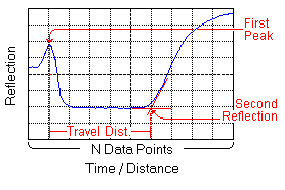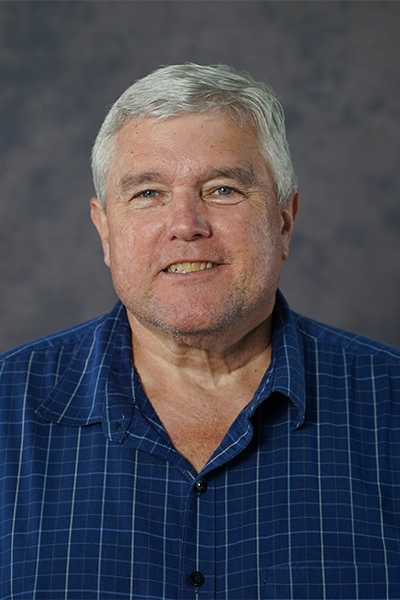Soil physics addresses physical properties and processes of soil and porous medium systems. Properties such as texture, structure, density, surface area, and aggregate stability are addressed along with water-content and potential leading to the water retention character of soil. Processes involving transport of heat, solutes, gasses and of course water are characterized and modeled.
Environmental Soil Physics Group
WinTDR

About WinTDR
WinTDR was developed by the Soil Physics Group at Utah State University, Logan Utah, USA. The program is designed to facilitate time domain transmission (TDR) waveform collection and analysis. Outputs are volumetric water content, electrical conductivity, and permittivity (or dielectric content) of soils / solutions. (Additional information regarding TDR can be found in "Time Domain Reflectometry (TDR) Measurement Principles and Applications" by Jones S.B, J.M. Wraith, and D. Or.) [pdf]
A decade of development (1993 – 2004) went into WinTDR with the purpose to create a user-friendly Windows interface with which to accurately and efficiently analyze TDR waveforms in the laboratory. The program continues to be used here at Utah State University and throughout the world. As of 2016 there were over 260 citations listed in a Google Scholar search.
The basic principles used by WinTDR for analysis to determine the bulk dielectric from a TDR waveform are (see the diagram for a visual description of a TDR waveform):
- First, the reflected distance an electromagnetic wave travels from the TDR device, through cables of fixed dielectric properties to the head of the probe and back again, is fairly constant, with exception of small variations due to temperature. We call this the first reflection, or "peak" of the waveform. The first peak can be set by the user or determined by the waveform 'analyzer' of WinTDR.
- Second, the travel distance (time), back and forth, along the length of the probe is determined by finding the point of the second reflection, which follows the peak, and subtracting the peak from the point of the second reflection.
- Finally, the length of the probes prongs, is a known fixed constant. The travel distance along the probe length determines the bulk dielectric which is then converted into the volumetric water content by applying Topp's (1980) equation.
Additional information, including more detail about the analysis process accomplished by WinTDR can be found on the documentation section below.
About the final (2004) version of WinTDR
Beginning in 1993, WinTDR has been improved and updated, originally designed to run only under 16-bit Windows, the latest version of WinTDR (2004) runs on 32 bit machines using Windows 9x, ME, NT, 2000, or XP. Going forward, a major limitation to using WinTDR is the incompatibility of the software with newer operating systems. As of October 2016, we can only run WinTDR on Windows XP OS and older. We were able to use Windows 7 until recently, probably due to OS upgrades we can no longer run it on Windows7. There was also a note from a user that problems also arise on 64 bit machines. The optimal hardware configuration for WinTDR is using a PC/laptop with a serial and parallel port.
WinTDR includes the following features:
- Connects to the Tektronix 1502/3 B/C TDR units, via the Tektronix SP232 module
- Self-calibration of probe length and impedance (cell constant) values
- New Graphical Interface to allow the user to quickly view waveform values, multiple waveform viewing and enhanced usability.
- Quickly change analysis information and settings.
- Dynamic file formatting for saving waveforms and file location specified by the user.
- Ability to change the third order polynomials coefficients of Topp's (1980) equation with user defined coefficients.
- Waveform values are in Reflection Coefficient values (Rho).
- Option to calculate Dielectric Constant from the temperature of water.
- Ability to use Multiplexers (Campbell SDMX50 8 to 1 and VaZEC 16 to 1)
- Automated readings for automatic data capturing and analysis.
WinTDR Program Downloads
Version: 6.1
Download [zip]
Build Date: 08/23/04 (Build Number: 040823)
Use With: Windows 95, 98, ME, NT, 2000, XP
Information:
- Connects to the Tektronix 1502 B/C or 1503 B/C TDR units (must have Tektronix SP232 module)
- Re-analyze waveforms from WinTDR version 5.x, 6.x, or Campbell Scientific PCTDR files
- Setup and re-analysis with or without a TDR connected to the computer
- "Probe List" capabilities for retrieving extended waveforms
- Multiplexing with Campbell SDMX50 (8 to 1) or VaZEC/VaDose (16 to 1) Multiplexers
- Improved Probe Length Calibration
- Improved Probe Impedance Calibration - More accurate EC measurement during analysis
- EC calculation using Giese & Tiemann or Castiglione & Shouse methods
- Automated waveform retrieval and analysis
- Defect Fixes from previous versions of WinTDR 6.x
Previous Versions
The following are older versions of WinTDR. These versions are no longer supported or maintained.
Windows 95/98
- Version 5.1 [zip]
- Increased reliability with multiplexer setup and hardware communications.
- Version 5.0 [zip]
- Waveform values now calculated to reflection coefficient (Rho) values
- Improved Multiplexer support
- Improved reliability from 4.x versions
- Version 4.5 [zip]
- Older Version designed and released in 1999
- Uses pixel values for waveform points
- Version 4.0 [zip]
WinTDR Documentation
The complete manual and individual chapters are in PDF format and require the FREE Adobe Acrobat Reader to view them. Download Acrobat Reader.
FALL 2004, WinTDR Version 6.1 (all builds)
View/Download:
- Entire Manual [zip]
- Introduction
- Chapters
- Getting Started with WinTDR
- The WinTDR Interface
- Hardware Communications
- Probe Settings and Calibration
- Basic Waveform Analysis
- Multiplexing
- Automated Readings
- File Formats
- Principles of Time Domain Reflectometry (TDR)
- Probe Assembly
- WinTDR Algorithms
- References
Previous Manuals
2001, Fall (WinTDR Version 4) [.zip file]
Additional Information/Research Documents
Electrical Conductivity Calculations using Castiglione and Shouse - Describes WinTDR's new probe impedance calibration method for more accurate EC calculations. Additional information can also be found in the following document:
-Castiglione, P., and P.J. Shouse, The Effect of Ohmic Cable Losses on Time-Domain Reflectometry Measurements of Electrical Conductivity, Soil Sci Soc Am J, 67 (2), 414-424, 2003.
Time Domain Reflectometry Measurement Principles and Applications - This document describes the basic principles of Time Domain Reflectometry. This is a copy of the following article:
- Jones, S.B., J.M. Wraith, and D. Or, Time Domain Reflectometry (TDR) Measurement Principles and Applications, Hydrological Processes, 16, 141-153, 2002.
Requirements / Features
Recommended Requirements to run WinTDR
- Pentium class (or better) Processor (it will run on 486 processors, but it is not recommended)
- Serial Port required for TDR connectivity (must be registered as a COM port in Windows System)
- Parallel Port required for Multiplexing
- 32 Mb RAM
- 2 Mb Hard drive space for installation (waveforms / analysis require more)
- Tektronix 150X B/C TDR with the Tektronix SP232 interface
WinTDR Support
Very limited support is now available through the Environmental Soil Physics Group at Utah State University. Send inquiries to Scott Jones (scott.jones@usu.edu) with the subject line ‘WinTDR’. Include the following with your question:
- Your WinTDR Version and Build Date (found in the ‘About’ window in WinTDR)
- Your Operating System version (e.g.. Windows XP)




